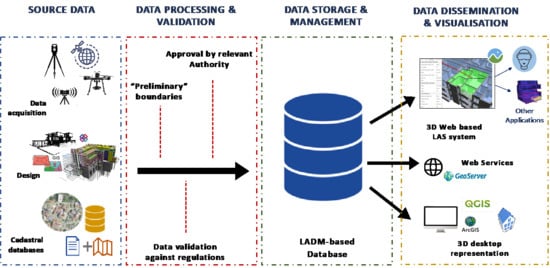3D Land Administration: A Review and a Future Vision in the Context of the Spatial Development Lifecycle
Abstract
Share and Cite
Kalogianni, E.; van Oosterom, P.; Dimopoulou, E.; Lemmen, C. 3D Land Administration: A Review and a Future Vision in the Context of the Spatial Development Lifecycle. ISPRS Int. J. Geo-Inf. 2020, 9, 107. https://doi.org/10.3390/ijgi9020107
Kalogianni E, van Oosterom P, Dimopoulou E, Lemmen C. 3D Land Administration: A Review and a Future Vision in the Context of the Spatial Development Lifecycle. ISPRS International Journal of Geo-Information. 2020; 9(2):107. https://doi.org/10.3390/ijgi9020107
Chicago/Turabian StyleKalogianni, Eftychia, Peter van Oosterom, Efi Dimopoulou, and Christiaan Lemmen. 2020. "3D Land Administration: A Review and a Future Vision in the Context of the Spatial Development Lifecycle" ISPRS International Journal of Geo-Information 9, no. 2: 107. https://doi.org/10.3390/ijgi9020107
APA StyleKalogianni, E., van Oosterom, P., Dimopoulou, E., & Lemmen, C. (2020). 3D Land Administration: A Review and a Future Vision in the Context of the Spatial Development Lifecycle. ISPRS International Journal of Geo-Information, 9(2), 107. https://doi.org/10.3390/ijgi9020107






